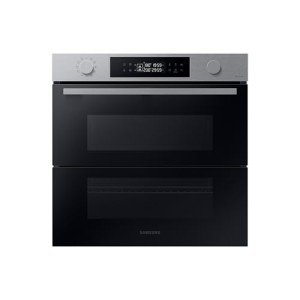
19
May9 . What Your Parents Teach You About Built In Electric Ovens
Understanding Built-In Electric Ovens: A Comprehensive Guide
In the last few years, the kitchen has actually transformed from merely a cooking area to a center for household events, entertaining visitors, and enjoying quality time. Among the most critical elements of modern culinary experiences is the kitchen oven. Built-in electric ovens have actually gained tremendous appeal, thanks to their space-saving styles, streamlined aesthetic appeals, Built In Electric Oven and advanced functions. This short article supplies an extensive expedition of built in ovens for sale-in electric ovens, covering their types, advantages, installation considerations, maintenance tips, and a comprehensive FAQ area.
What Are Built-In Electric Ovens?
Built-in electric ovens are integrated ovens and hobs cooking systems designed to be installed directly into kitchen cabinetry or walls. Unlike standard freestanding ovens, built-in models provide a seamless appearance, adding to the overall design of the kitchen space. They come equipped with numerous cooking functions, advanced technology, and energy-efficient features.

Types of Built-In Electric Ovens
built in Electric oven-in electric ovens can be found in various styles to fulfill varied culinary requirements and kitchen designs. Here are the most typical types:
Single Ovens: Ideal for smaller sized kitchens, single ovens provide ample cooking space for daily meals without using up excessive room.
Double Ovens: For avid cooks or households that enjoy hosting dinner celebrations, double ovens provide the capability to prepare multiple dishes at different temperatures all at once.
Wall Ovens: Wall ovens are mounted at eye level, making them quickly accessible while getting rid of the requirement to bend down. They normally come in single or double configurations.
Mix Ovens: These flexible appliances integrate conventional oven cooking with microwave functionality, enabling much faster cooking times while preserving food flavor and texture.
Steam Ovens: Designed for health-conscious cooks, steam ovens use steam to cook food, preserving wetness and nutrients. They are perfect for vegetables, fish, and rice dishes.
Benefits of Built-In Electric Ovens
Built-in electric ovens offer various benefits for property owners seeking to enhance their cooking experience. Some of the benefits include:
Aesthetic Appeal: Their sleek style enables higher design versatility, fitting flawlessly into kitchen cabinetry and creating a refined look.
Space Efficiency: built in ovens-in ovens conserve important flooring space, making them an outstanding choice for compact cooking areas.
Improved Functionality: Many built-in electric ovens integrate the current cooking technologies, such as convection cooking, wise controls, and numerous cooking modes.
Easy Accessibility: Models installed at eye level are much easier to access, minimizing pressure while examining or removing food.
Increased Home Value: Installing a high-quality built-in electric oven can improve the resale worth of a home due to its contemporary and premium functions.
Installation Considerations
While built-in electric ovens provide many advantages, correct setup is crucial to ensure they operate efficiently. Below are crucial considerations to remember:
Cabinet Size: Ensure that the cabinets where the oven will be set up is sized correctly. Most built-in ovens included particular measurements that must be complied with throughout installation.
Electrical Requirements: Built-in electric ovens require a devoted electrical supply. Property owners must consult a licensed electrical expert to make sure that the electrical wiring fulfills the necessary requirements.
Ventilation: Unlike gas ovens, electric ovens typically do not need venting, but adequate air flow is important to prevent overheating.
Positioning: Consider the oven's placement worrying kitchen workflow. It ought to be quickly accessible while thinking about clearances from other kitchen appliances.
Installation Steps
- Measure the cabinet area to ensure the oven fits.
- Ensure the electrical supply is prepared.
- Carefully place the oven within its designated cabinet.
- Secure it as per manufacturer instructions.
- Connect to power and test its performance.
Maintenance Tips for Built-In Electric Ovens
To extend the life of a built-in electric oven and ensure its reliable performance, carry out these upkeep suggestions:
Regular Cleaning: Wipe spills and discolorations after each use. Usage suitable cleaners, ideally mild, to avoid damaging the interior surface areas.
Inspect Seals: Inspect the door seals for fractures or damage, and change them if required to maintain performance.
Adjust Temperature: Over time, ovens may lose precision. Use an oven thermometer to verify temperature readings and recalibrate if required.
Yearly Professional Service: Schedule an expert examination and upkeep service a minimum of when a year for extensive checks and repairs.
Regularly Asked Questions (FAQs)
1. What size built-in electric oven do I need?
The size of the oven should depend upon your kitchen design and cooking needs. Requirement wall ovens normally range from 24 to 30 inches in width.
2. Can I set up a built-in electric oven myself?
While some homeowners might have the skills to install their oven, it is usually a good idea to work with a professional to make sure appropriate installation and compliance with safety requirements.
3. What features should I try to find in a built-in electric oven?
Think about features like convection cooking, self-cleaning options, wise technology, and numerous cooking modes to enhance your culinary experience.
4. Just how much does a built-in electric oven expense?
Prices range considerably based upon brand, functions, and size. A fundamental model may start around ₤ 500, while high-end options can exceed ₤ 3,000.
5. Are built-in electric ovens energy-efficient?
The majority of contemporary electric ovens come geared up with energy-efficient innovations, assisting to minimize energy consumption while maintaining cooking efficiency.
Built-in electric ovens provide a blend of design, benefit, and advanced cooking abilities, making them a necessary addition to today's kitchens. By understanding the types, benefits, setup considerations, and appropriate maintenance, house owners can make educated decisions that enhance their culinary experiences while improving their kitchen's aesthetics. Whether one is a seasoned chef or a casual cook, investing in a built-in electric oven can change the cooking experience into a wonderful cooking journey.

Reviews